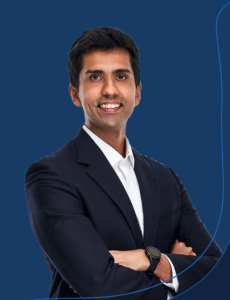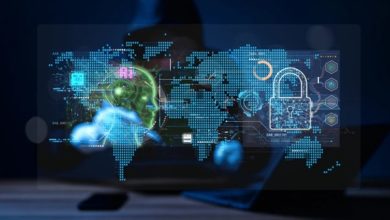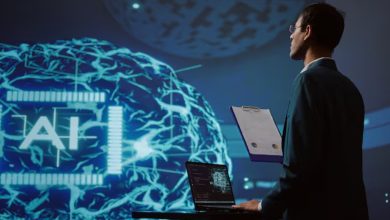Cyber Sierra Co-Founder Views APAC’s Cybersecurity as a High-Stakes Game: Are Organisations Prepared for the Evolving Threats Ahead?
The Cybersecurity Landscape in the Region Is a Battlefield to Say the Least

Cybersecurity across the Asia Pacific (APAC) might sound like a quiet game of defence, but Pramodh Rai, Co-Founder of Cyber Sierra, would probably call it a battlefield in slow motion. One moment, it’s about keeping systems compliant with last year’s regulations; the next, a fresh wave of cyber threats is crashing down. Each country operates with its own set of rules, and while the world grows interconnected, these layers of compliance, says Pramodh, “Aren’t really bound by geography anymore.” It’s like juggling swords, with the talent shortage in APAC and regulatory shifts threatening to tip the scales at any moment.
And while local CISOs know all too well that regulatory standards are “constantly evolving,” the game’s stakes have grown. A gap in the line of defence can lead to a severe breach, and what’s worse, these breaches don’t respect borders.
Compliance: A Tug of War with Complexity
The APAC region could well be described as a cybersecurity patchwork. Every country enforces unique compliance standards, evolving faster than the tech systems intended to support them. “Each country has its own regulatory framework,” says the Co-Founder of Cyber Sierra, “and they’re constantly evolving.” It’s as though cybersecurity has become an exhausting game of whack-a-mole, where staying compliant means dodging the next hammer. These frameworks aren’t just a matter of legal housekeeping but dictate the integrity of systems designed to shield sensitive data.
Without enough skilled hands on deck, the fight to meet these standards grows fierce. Cybersecurity talent in APAC is, as he points out, “a significant shortage,” a reality that has led to a race toward automation and smart monitoring tools. But can technology alone fill the talent void? While automated tools provide critical support, allowing CISOs to oversee operations without manually tracking every threat, Pramodh emphasises the human touch is essential. The tools support—rather than replace—the judgment needed to navigate APAC’s distinct challenges.
The Cost of Legacy Systems: Holding On or Holding Back?
Legacy systems may have once been the backbone of enterprise IT. But the Cyber Sierra’s executive would quickly tell you they’re starting to show their age, falling short in the face of modern, evolving cyber risks. “Organisations that use these legacy systems often struggle to keep up,” he observes. Designed to counter threats of a bygone era, these outdated systems lag in speed and flexibility, adding a critical vulnerability into the mix.

Relying on manual processes has its own costs. Wasting time and talent on tasks that should be automated, organisations inevitably expose themselves to human error and data fatigue. In contrast, real-time, adaptive systems could analyse threats and flag vulnerabilities before they reach crisis level. Moving away from legacy infrastructure, he believes, is imperative. “We need a wider adoption of these intelligent, automated systems,” he says, pointing out that smart tech solutions can integrate seamlessly with current stacks, adapting to security demands in real time—a vital advantage in a region facing such dynamic challenges.
Embracing Proactivity: Don’t Wait for the Fire
The difference between reactive and proactive cybersecurity might sound subtle, but it’s the gap between containing a spark and putting out a full-blown fire. This paradigm shift is about asking a simple but powerful question: Why wait? Pramodh champions a proactive approach that essentially rewires the cybersecurity mindset from reactive fixes to preventative vigilance. “Looking for vulnerabilities before they become threats,” as he puts it, has become the new order of business.
It’s here that APAC businesses are beginning to recognise the value of a proactive Risk Governance Framework – a system that does more than log incidents. Instead, it becomes an early warning network, flagging risks as they materialise. Pramodh is quick to add that a proactive stance requires the right tools: intelligent platforms designed for constant threat detection, pre-emptive risk management, and immediate incident response. No longer confined to the back-office IT department, risk management is coming into the fold of broader business strategies.
Continuous Vendor Monitoring: The New Normal
The trouble with APAC’s vendor networks is that they’re vast, interconnected, and, like any ecosystem, only as strong as their weakest link, says the Cyber Sierra Co-Founder. Real-time oversight of third-party vendors is a must, but here’s the kicker: many organisations still rely on questionnaires and certifications for assurance. As he bluntly puts it, “These aren’t sufficient.” This approach only reveals a vendor’s security standing at a single point in time, leaving organisations in the dark until the next check-up.
So, what’s the alternative? Real-time, automated risk assessments are already proving their worth. Pramodh highlights an instance where Cyber Sierra implemented its Third-Party Risk Management (TPRM) solution for a global bank. The outcome? Continuous, real-time monitoring of vendor security postures that saved both time and resources. Continuous monitoring, the Cyber Sierra’s Co-Founder explains, allows organisations to identify and tackle risks as they appear, maintaining a stable, secure network even as threats evolve.
GRC Evolution: From Bureaucracy to Business Intelligence
Governance, Risk, and Compliance (GRC) has long been cast as a cumbersome necessity – complex, slow-moving, and bogged down in paperwork. Yet, today’s GRC systems are undergoing a revolution of their own. Cyber Sierra’s Pramodh envisions GRC platforms that not only manage risks but actively integrate with business operations, providing “real-time insights, streamlined workflows, and advanced analytics.”
AI and machine learning have paved the way for this shift. In the Cyber Sierra executive’s view, these tools “help organisations predict risks more accurately,” and turn risk management from a back-office process into a core business function. This intelligent transformation enables organisations to respond faster to risks, freeing human talent to focus on complex security challenges that require judgment and expertise. GRC isn’t just becoming faster; it’s becoming smarter, morphing from a burdensome requirement into an indispensable business asset.
The Human Experience of Cyber Compliance and How Cyber Sierra Fits In
Cyber compliance often gets a bad rap as convoluted and bureaucratic, a sentiment that’s echoed throughout organisations. Pramodh compares it to students dreading math—until the right teacher comes along. This comparison brings home the point: when compliance becomes user-friendly, people engage. “When you give your security teams and employees an intelligent platform that breaks down the entire process into simple tasks, it’s easier to get everyone to have skin in the game,” he observes.
Pramodh adds that Cyber Sierra’s compliance solution is designed to do just that, transforming the experience into something intuitive, where tasks are simplified, and everyone feels empowered. This democratised approach to compliance shifts the culture from resistance to responsibility. Compliance isn’t a matter of grudging obligation but a shared commitment to organisational security. By streamlining the user experience, he says Cyber Sierra helps companies create an environment where every employee is an active participant in cybersecurity.
AI: The Double-Edged Sword of Cybersecurity
The promise of AI is thrilling and unnerving in equal measure. As far as Pramodh is concerned, AI is set to be one of the most transformative forces in cybersecurity, “automating large chunks of human endeavour.” The system of record, when paired with AI, has the potential to create an unmatched level of cybersecurity defence, processing and analysing vast amounts of data at speeds that humans can only dream of.
But while AI holds immense potential, he doesn’t mince words about its risks. Malicious actors already exploit AI to launch more sophisticated attacks, pushing organisations to keep pace or risk falling behind. “Adopting AI/ML can help us identify and respond to threats faster and more accurately than ever before,” he says. With forward-thinking regulatory bodies in APAC—such as those in Singapore – leading the charge, organisations are pressed not only to keep up but to innovate in their defences. AI-driven cybersecurity isn’t merely a tech trend; it’s a necessity in the ongoing war against cyber threats.
Cultivating a Culture of Resilience
APAC’s cybersecurity landscape demands a tough, tenacious approach. Yet, with the right mix of tools, strategies, and—perhaps most importantly—mindset, organisations can turn cybersecurity challenges into strengths. Pramodh’s insights reveal a region at a turning point, where proactive strategies, automated monitoring, and smart compliance solutions redefine what it means to be resilient.
This isn’t just about beating the bad guys; it’s about cultivating a pervasive cybersecurity culture, one where every department and individual plays a role. His vision is a powerful one: a region that leads by example, prioritising proactive defence mechanisms and embedding cybersecurity in every layer of business operations. What’s clear is that as cybersecurity challenges grow—and they will—APAC will have little choice but to increasingly prioritise resilience and embed security into all facets of business to stay ahead of emerging risks.




